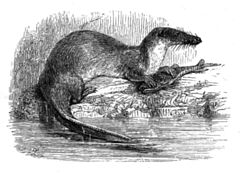Project 443: E. R. Seiffert. 2010. The oldest and youngest records of afrosoricid placentals from the Fayum Depression of northern Egypt. Acta Palaeontologica Polonica. 55 (4):599–616.
Abstract
Tenrecs (Tenrecoidea) and golden moles (Chrysochloroidea) are among the most enigmatic mammals alive today. Molecular data strongly support their inclusion in the morphologically diverse clade Afrotheria, and suggest that the two lineages split near the K−T boundary, but the only undoubted fossil representatives of each superfamily are from early Miocene (~20 Ma) deposits in East Africa. A recent analysis of partial mandibles and maxillae of Eochrysochloris, Jawharia, and Widanelfarasia, from the latest Eocene and earliest Oligocene of Egypt, led to the suggestion that the derived “zalambdomorph” molar occlusal pattern (i.e., extreme reduction or loss of upper molar metacones and lower molar talonids) seen in tenrecoids and chrysochloroids evolved independently in the two lineages, and that tenrecoids might be derived from a dilambdomorph group of “insectivoran−grade” placentals that includes forms such as Widanelfarasia. Here I describe the oldest afrosoricid from the Fayum region, ~37 Ma Dilambdogale gheerbranti gen. et sp. nov., and the youngest, ~30 Ma Qatranilestes oligocaenus gen. et sp. nov. Dilambdogale is the most generalized of the Fayum afrosoricids, exhibiting relatively broad and well−developed molar talonids and a dilambdomorph arrangement of the buccal crests on the upper molars, whereas Qatranilestes is the most derived in showing relatively extreme reduction of molar talonids. These occurrences are consistent with a scenario in which features of the zalambdomorph occlusal complex were acquired independently and gradually through the later Paleogene. Phylogenetic analysis places Dilambdogale and Widanelfarasia as sister taxa to the exclusion of crown afrosoricids, but derived features that these taxa share with early Miocene Protenrec hint at the possibility that both taxa might be stem tenrecoids. Late Paleocene Todralestes and Afrodon from Morocco are similarly placed as stem afrosoricids, indicating that African adapisoriculids (including Garatherium) might also be relevant to the origin of the tenrecoid and chrysochloroid clades.Read the article »
Project DOI: 10.7934/P443, http://dx.doi.org/10.7934/P443
| This project contains |
|---|
Download Project SDD File |
Currently Viewing:
MorphoBank Project 443
MorphoBank Project 443
- Creation Date:
22 November 2010 - Publication Date:
07 December 2011
This research
supported by
Authors' Institutions ![]()
- Stony Brook University
Members
| member name | taxa |
specimens |
media |
| Erik Seiffert Project Administrator | 0 | 0 | 0 |
| Maureen Admin Full membership | 0 | 0 | 0 |
Project has no matrices defined.
Project downloads 
| type | number of downloads | Individual items downloaded (where applicable) |
| Total downloads from project | 451 | |
| Document downloads | 29 | Seiffert APP 2010 (29 downloads); |
| Project downloads | 422 |

